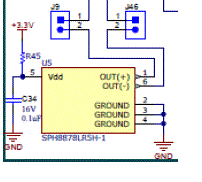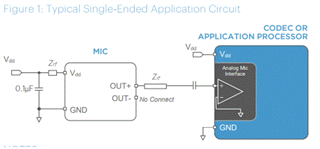Other Parts Discussed in Thread: TAC5112
Tool/software:
Hello,
My customer has been evalating TAC5112 on TAC5112EVM. It seems the Vdd(2.04V was observed) of the MEMS MIC(SPH8878LR5H-1) is lower than expected 3.3V, so it didn't work. Is it a common issue on the EVM or the only one on my customer's board? I heard the voltage before R45 was 3.3V, so it dropped after R45 to 2.04V or so.

Best Regards,
Yoshikazu Kawasaki


